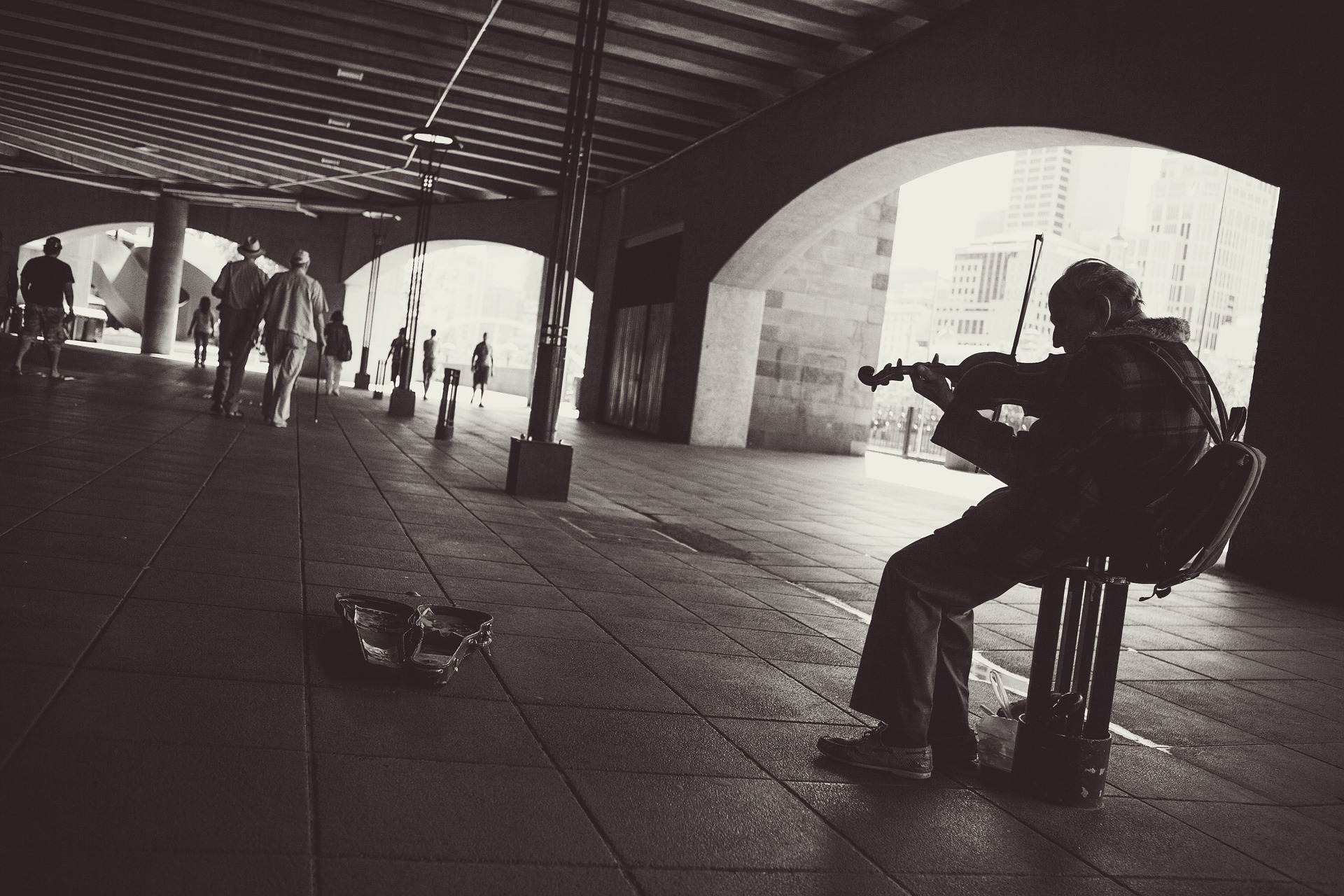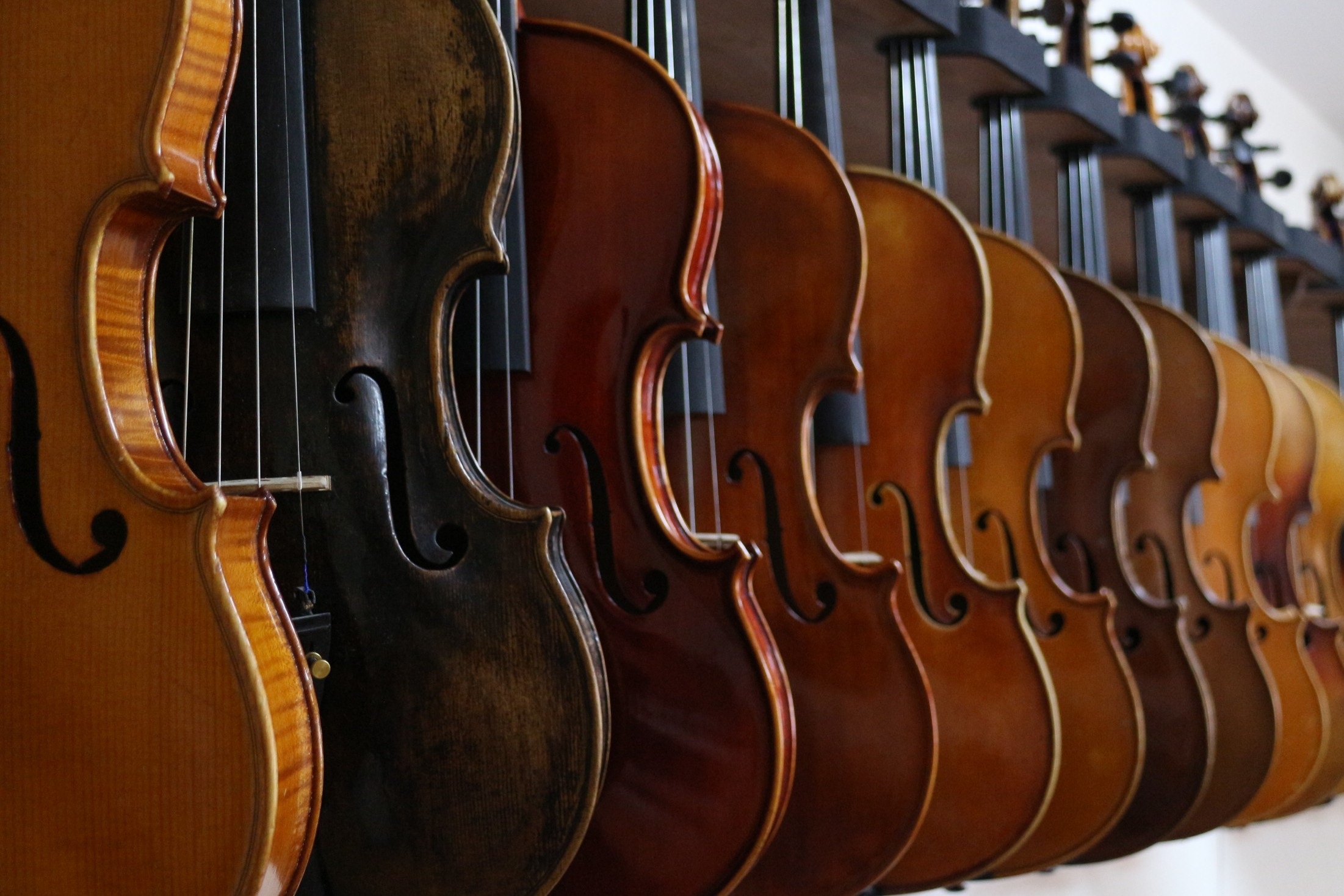If there’s one thing I admire in a musician it’s courage.
The courage to forget about playing it safe. The courage to be willing to give everything during a performance. Even if doing that could lead to embarrassment or a massive meltdown.
During a recent performance, I had a chance to see that kind of courage in action. A long time friend had to take a big spotlight solo while the rest of our 60 piece orchestra had nothing written. All we could do was stop and listen along with the large audience in attendance.
It was a situation I could relate to; a skilled musician who could easily play the passage in question under normal circumstances. But that doesn’t count for much when you’re expected to play perfectly, even under the spotlight.
So when the orchestra came to a stop and the lights went up, my friend rose to the occasion and gave it everything. Even though it was more than a little uncomfortable. Even though a noticeable tremble began to form in his bow arm, and his sound began to waver ever so slightly. But somehow he held it together to the very end.
I just wanted to tell him: “Slow down. Take your time. Enjoy your moment in the spotlight.”
And though my friend was courageous, he certainly wasn’t having much fun that night. Too many experiences like that, and soon a musician begins to dread the thought of playing a solo.
That performance (and many other similar experiences) remind me of a Jackson Browne lyric:
Take it easy, take it easy
Don’t let the sound of your own wheels drive you crazy
It’s a lyric that reminds me that I’m often my own worst enemy. And that even though I’ve got enough courage there’s still something else that can be missing.
After playing hundreds, maybe even thousands of concerts in my lifetime it’s become obvious that even with the courage to get on stage, the sound of my own wheels can still drive me crazy. Unless I have a rock-solid belief that I can “pull it off.”
The famous violinist Itzhak Perlman said it best: “Trust in your ability.” Over the years I’ve learned that only when I have the kind of deep trust that I could practically play a concert in my sleep, does the real fun begin.
Courage + Trust = FUN
How do you get that kind of trust in your ability? You already know the unexciting answer: you’ve got to practice. But not just any kind of practice.
I spent years practicing and getting nowhere fast. I think my playing may actually have gotten worse during those “random and reactive practice” years.
Why didn’t anyone (like my teachers) tell me that only a certain type of practice could give me what I really wanted: the ability to play at my best without the worry of freaking out that my bow would shake or my palms would go sweaty. The problem was so bad I started reading up on stage fright, while at the same time avoiding auditions and solo performances. At one point I even took drugs to calm my nerves.
Only after years (that’s a story in itself) did I discover that there is a little known way of approaching practice so that it actually makes you feel completely confident in your own ability. And better yet, this practice approach is WAY more interesting than regular practice.
It’s all about getting rid of the bright shiny objects that cloud your focus and instead commit to a daily working process. I call it my “warm-up” routine.
There is a “zen” in violin practice. It’s your best single path to increasing your skills and your enjoyment of the instrument.
More on this to follow. In the mean time, may your violin journey be courageous and FUN!
—Bill Alpert
P.S. Some people are born with a knack for effective practice: it’s called natural talent. The good news is everyone can learn this skill.




